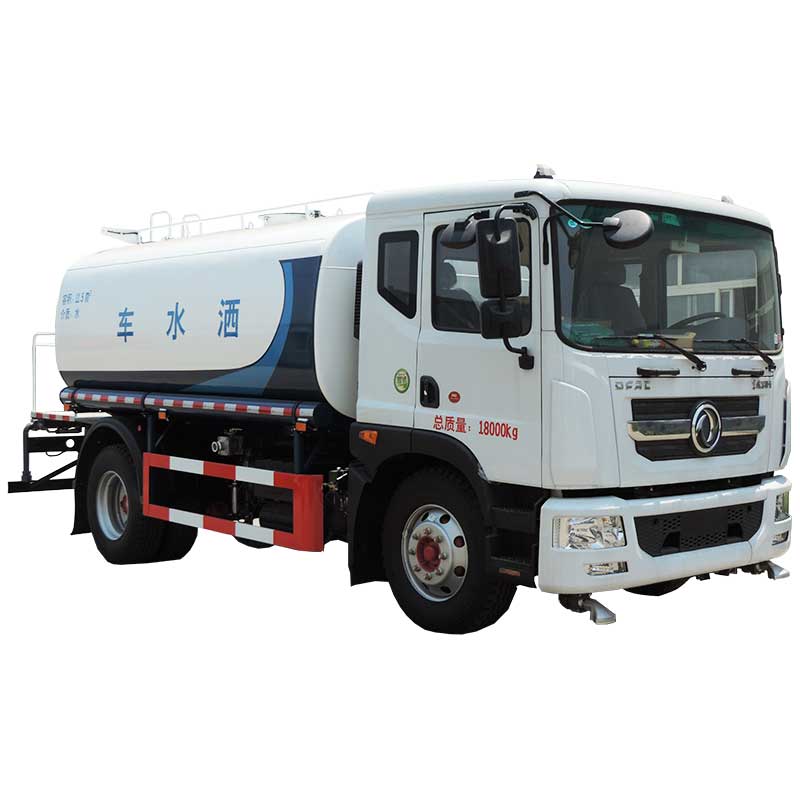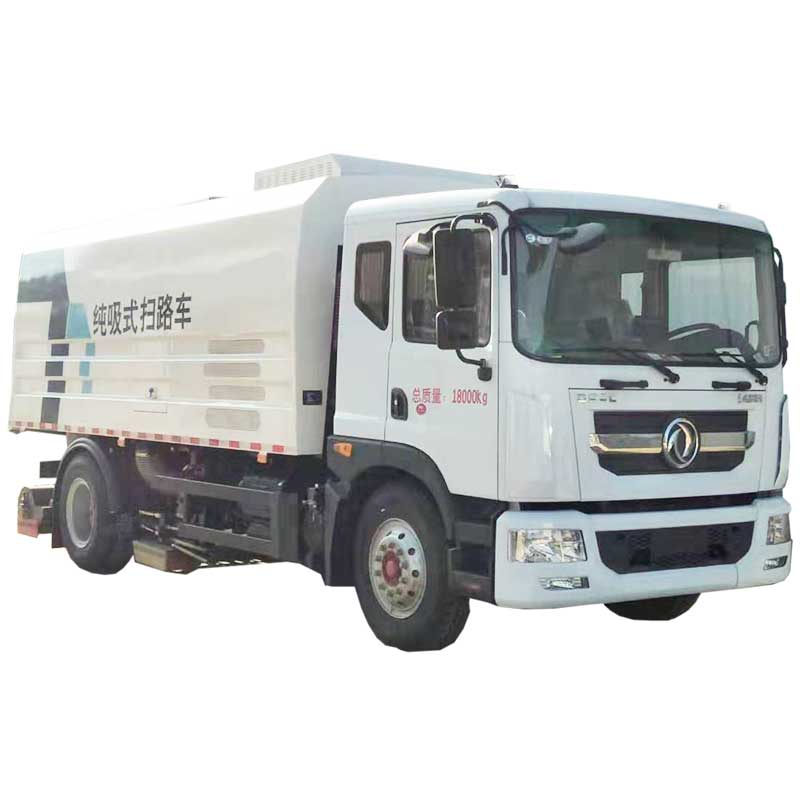The Characteristics, Classification, and Application of Flatbed Trailers
2024-02-26 02:40
Flatbed trailers are widely used in the transportation of heavy goods, equipment and vehicles. So how much do you know about the definition, characteristics, classification and specific applications of flatbed trailers? Now let us understand this knowledge together.
What is a flatbed trailer?
Flatbed trailers are large vehicles with flat bodies. Flatbed trailers do not have a fixed roof or body sides. Because forklifts can be operated from either side of the trailer, flatbed truck trailer’s structure simplifies loading and unloading of cargo.
A flatbed trailer is a non-powered road vehicle that needs to be towed by a forklift or truck due to its industrial design and technical characteristics before it can be used normally.
A flatbed trailer, also known as a flatbed truck trailer, full-trailer flatbed truck, full trailers, etc., is an important tool for modern logistics and transportation. Flatbed trailers, along with enclosed dry trucks and refrigerated freezer trucks, are the most commonly used semi-trailers on the road today. The use of flatbed trailer is the most effective and simple means to improve economic efficiency. It has the advantage of strong load-bearing capacity and high efficiency.
Since the flatbed trailer have no roof or sides, they can carry cargo that is too tall, too wide, or too long for a traditional dry van. Generally speaking, flatbed truck trailer can carry around 48,000 pounds of cargo, but the maximum capacity depends on the weight of the tow vehicle. Flatbed truck trailer are also used for heavy-duty hauling, which may exceed 100,000 pounds in special cases.
A flatbed trailer train can be formed by one tractor pulling one or more full trailers.
Flatbed trailer trains have the following advantages over regular automobiles: 1) high transport efficiency: generally, the loading mass of full-trailer trains is 1-2 times that of ordinary trucks; 2) low manufacturing costs: the manufacturing cost of a full trailer is generally 50%-60% lower than that of a truck of the same tonnage; 3) low fuel consumption: fuel consumption per 100 tons kilometers is 40% lower than that of a truck; 4) It has a simple structure, easy maintenance and low maintenance costs, and it can be towed by ordinary trucks without modification; 5) It can be removed and hung to be used as a storage unit for a longer period.
What does a flatbed truck trailer carry?
Flatbed trailers are generally used for special purposes such as heavy-duty transportation of industrial goods or transportation of personnel. They are suitable for bulk cargo turnover transportation in factories, docks, ports, warehouses, and other areas.
Common cargo transported by flatbed truck trailer includes heavy machinery, construction equipment, steel beams, architectural glass, scrap metal, shipping containers, mobile homes, military equipment, or vehicles.
Features of flatbed trailers
1)The use of highly elastic solid tires can enhance the load-bearing capacity of the flatbed trailer and extend its service life. The use of pneumatic tires can reduce damage to cargo caused by road bumps during driving; the use of press-fit tires enhances the stability of the vehicle and the load-bearing capacity of the flatbed trailer due to the lower tire height. Especially suitable for handling bulk molds.
2)It adopts a double-suspended structure, suspended frame, and automatic swing adjustment of the wheel axle to ensure that the vehicle body is level and the tire force is balanced on uneven ground. Improve safety during transportation.
3)The pin material of the connecting part is made of alloy steel, which has been treated with special technology to improve its service life.
4)It adopts the form of a double-track machine slewing mechanism, with more stable performance.
5)The traction faucet can be adjusted and fixed up and down. It only needs simple adjustment when traction heads or forklifts of different tonnages are towed.
Costs and Risks of Flatbed Trailers
As of June 2022, the national average rate for flatbed shipping service is $3.46 per mile. However, the total price of the flatbed shipment depends on several factors such as weight, distance, fuel cost, etc.
In addition to the complexities of transporting large, high-value cargo that is not subject to outdoor conditions, flatbed truck trailer drivers must manage considerable safety risks. Transporting unusually sized cargo on public roads can be very dangerous if not done properly. As a result, flatbed truck trailer drivers require more training and typically earn higher wages than dry truck drivers, which is one reason freight rates are higher.
What are the types of flatbed trailers?
While the original flatbed design is still evident in today's standard version, many variations appeared in subsequent years. These innovative designs mainly consider two major needs. Some designs provide extra space, allowing the truck to carry more or longer cargo in a single load than a legal flatbed. They also enable heavy or oversized cargo to comply with legal weight and dimensional safety regulations. What they all have in common is the lack of permanent side and roof rails, which means more flexibility in cargo loading.
The three most common flatbed truck trailer types are:
· Legal (the standard version with one deck height)
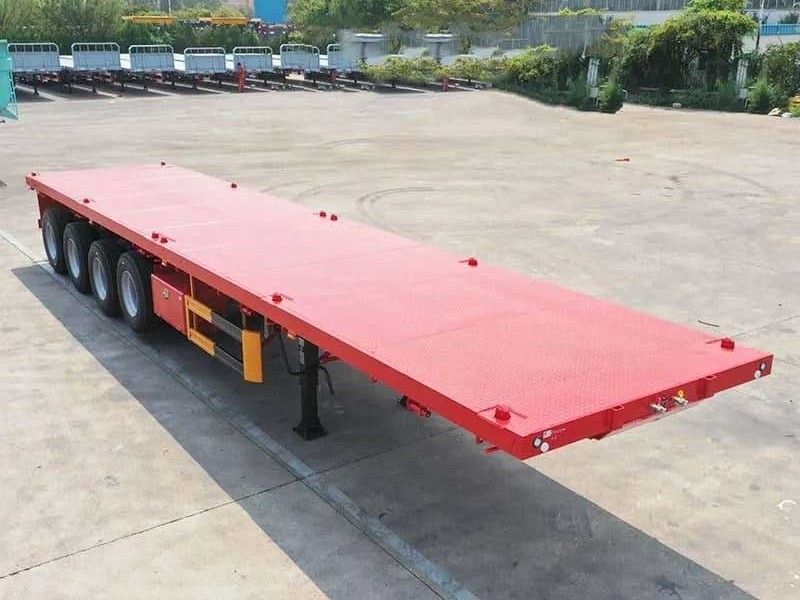
· Step-deck (also known as drop-deck or, less commonly, single drop)
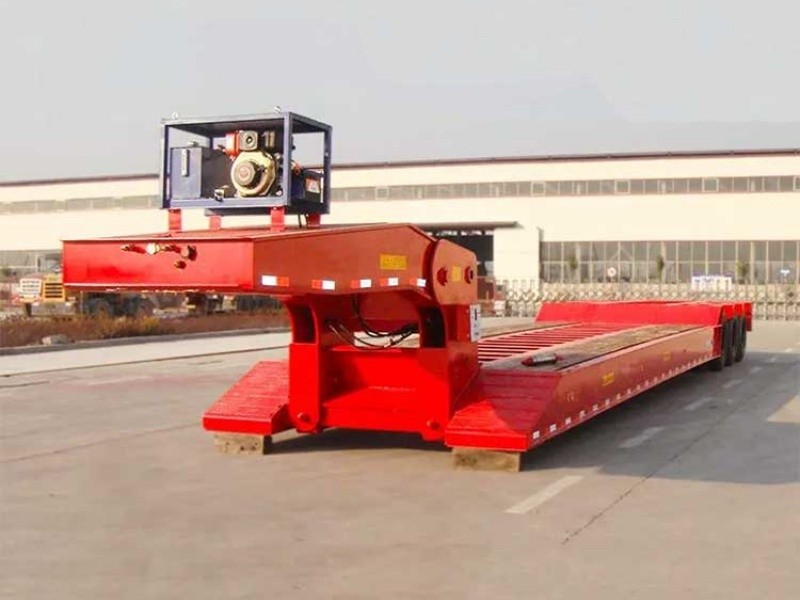
· Lowboy (also known as double-drop)
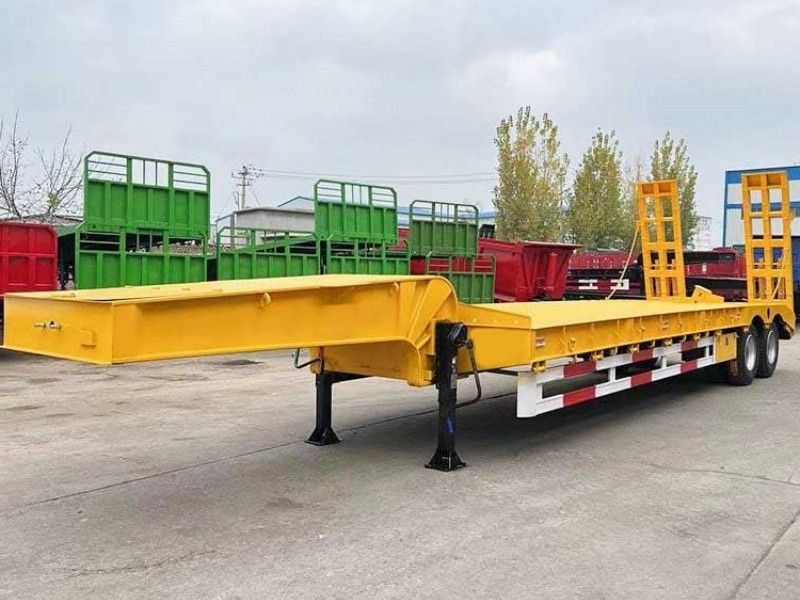
Based on these three types of flatbed trailers, new flatbed types have emerged. These include:
·Stretch (extendable) versions—Extended trailers offer greater flexibility in length and can transport extra-long cargo that cannot be loaded on standard flatbed trailers. But retractable trailers are much heavier than regular trailers. Therefore, they can carry a smaller amount of cargo compared to non-retractable trailers.
Retractable flatbed trucks can transport goods without hanging in the air. However, larger shipments may sometimes require permits and escort vehicles.
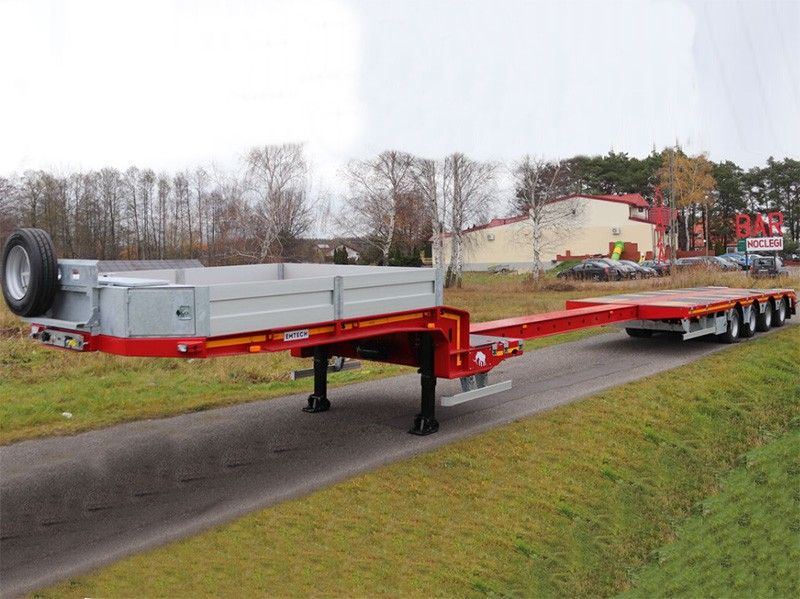
·Removable gooseneck trailer(rgn trailer)—The rgn trailer is a versatile trailer that can be used to carry long and tall cargo such as large machinery. The rgn trailer is removable. The trailer can be lowered to the ground to create a ramp. This means you can drive heavy equipment right onto the deck.
The rgn trailer are typically designed with 3 to 20 axles. The axles enable it to carry and transport heavy and large payloads.
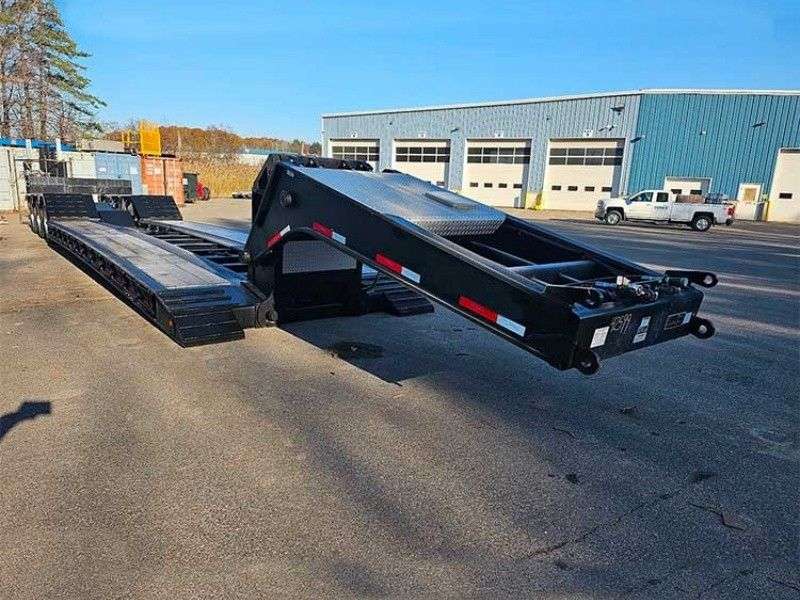
· Rolling tarp trailer—The flatbed trailer is equipped with panels, curved metal spikes shaped like a bow, and wooden stakes around the bed. Together they form a structure that allows you to install a tarpaulin when needed. With a tarp installed, your trailer can protect sensitive cargo from the elements.
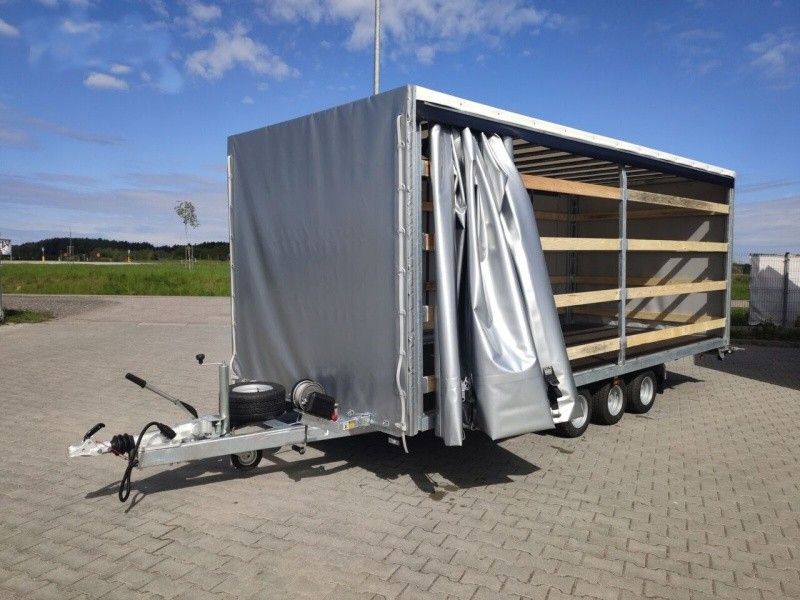
Cargo examples and their recommended flatbed trailer type
Depending on the type of cargo you need to transport, one of the following flatbed trailer types is likely to be suitable:
Industrial equipment, construction materials, steel coils, lumber
Legal flatbed – Standard flatbeds are good for all kinds of cargo, as long as it doesn’t exceed regulatory limits.
Length: 48’ or 53’
Width: 8.5’
Deck height: 5’
Max height (deck + cargo): 8.5’
Max weight (trailer + cargo): 22t.
Concrete products, coils, turbines, pipes
Step-deck/ drop-deck – The second deck on these trailers is longer and lower than the deck adjacent to the tractor. The lower deck can accommodate cargo exceeding the height limit.
Length: 48’ or 53’
Width: 8.5’
Deck height: 3′ – 3’6″
Upper deck length: 8′ – 12′
Lower deck length: 37′ – 43′
Max weight (trailer + cargo): 22t
Max height (deck + cargo): 10’.
Bulldozers, backhoe loaders, excavators
Lowboy/ double-drop – Similar to step-decks, but with three decks and (usually) a gooseneck. The highest deck is located behind the gooseneck, the longest and lowest decks are in the middle "well", and there is a deck at mid-height, starting in front of the wheels. Because most of its length is lower than a stepped deck, a low-bed truck can carry taller equipment.
Length: 48’
Width: 8.5’
Max cargo length: 29’
Upper deck lengths: 6′ – 10′
Lower deck length: 29′
Deck height: 18″ to 24″
Max height (deck + cargo): 11.5’ – 12′
Max weight (trailer + cargo): 19 – 20.4t.
Tractors, specialty vehicles, heavy machinery
Removable gooseneck (rgn trailer) –The rgn trailer are trailers with detachable pieces of equipment that act as ramps. Cargo can be driven in or out from the lowest deck in the middle section. They can be any type of flatbed but are usually low-bed trucks.
Machinery, lumber, steel, odd-sized loads
Rolling tarp trailer – Trailers featuring collapsible, accordion-style tarps that can easily be pulled over or off freight. This type of trailer allows for easy loading and unloading of cargo (such as from the side or above) that is not possible with a dry van. They also provide dry van protection when the tarpaulin is pulled open to cover the cargo during transportation. While standard flatbed curtain side trailers are the most popular, stepped and low flatbed curtain side trailers are also manufactured.
Find the right flatbed trailer trucking company
There are many flatbed trailer manufacturers in China, some of them specialize in the production of one or several kinds of trailers, while some of them have a full range of trailers.
With so many trailer configurations, sizes, and options available, finding the right company to transport your freight can feel overwhelming. If your cargo is oversized or heavy, a flatbed trailer is your best option. Understanding the differences between the different types of flatbed truck trailers and the cargo they typically carry will help you sort out the most suitable flatbed truck.
Summary
After understanding the characteristics, classification and applications of flatbed trailers, I believe you will be more confident in your choice of trailer. Please choose the flatbed trailer that suits you based on the specific characteristics, size, weight, etc. of the goods you often transport.
Get the latest price? We will reply as soon as possible (within 12 hours)
























